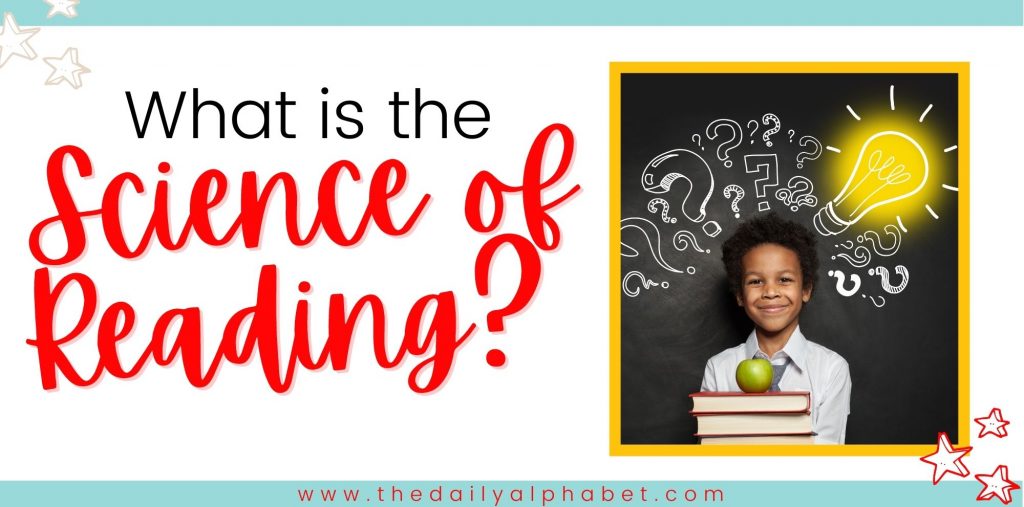
The term “science of reading” has been thrown out there a lot, but I’m not sure that I have found a clear, concise definition for it that didn’t sound like it was written by a scientist. Have you ever wondered what exactly IS the science of reading? Today I want to define it for myself and for you……because if you’re like me, we’re just your average everyday teacher who is trying to do the best we can for the students we serve.
If you’d rather hear about it, click play below. Otherwise, read on! Also, this post contains affiliate links, you can take a peek at my disclosure right here!
The Science of Reading isn’t….
Though the science of reading is a lot of things, there are many things that it is not. A line definitely needs to be drawn in the sand here. The science of reading is not a curriculum or program of instruction. If someone says that the science of reading has a pacing guide, a scope and sequence and the like, then they are distorting what the science of reading is.
It is not a philosophy or a new idea! Imagine my surprise when I discovered that there is research about the science of reading going back over 5 decades! It is also not a one size fits all program nor is it based on intuition.
So what is it?!?!?
What is the Science of Reading?
It is a body of research across many disciplines that is scientifically based. So I know that you may be thinking, what is the research about? I’m so glad that you asked, it’s about reading and the issues relating to reading and writing.
This body of information comes from researchers in multiple fields, including education, special education, neuroscience, linguistics, school and cognitive psychology, developmental psychology and communication sciences. Whew that’s a lot, and I’m sure there’s more that I missed or I don’t know about.
Because it is a body of knowledge that is based in science, that means that it builds as well as advances over time.

What has the Science of Reading done for teachers?
I t has kind of pulled the curtain back so to speak on how reading is processed in the brain.We now have access to the research that provides a deeper understanding of how the brain processes information from multiple points of information while reading.
This includes areas of the brain that processes print, speech sounds, language and meaning.
This helps us because as we learn more, we can begin to choose and implement reading practices that will be the most effective for our students.
How will this help our students?
The research on the brain has shown that when we provide and students receive explicit instruction along with tons of deliberate practice, the neural pathways that are necessary for reading are built in the brain. Much more than if students were just immersed in literacy, or received instruction that wasn’t explicit.
There is a lot more that goes into the science of reading, but I’m not a scientific researcher by any means, so I’m going to pause right here before I get too deep! I am still on my science of reading journey and I hope to share a little bit more on the blog and my YouTube channel.
I hope that this explanation has helped to clear up exactly what the science of reading is! If you want to learn more about the science of reading, then check out my list over on Amazon for some places to begin if your district isn’t providing training on it. You can check it out here!












